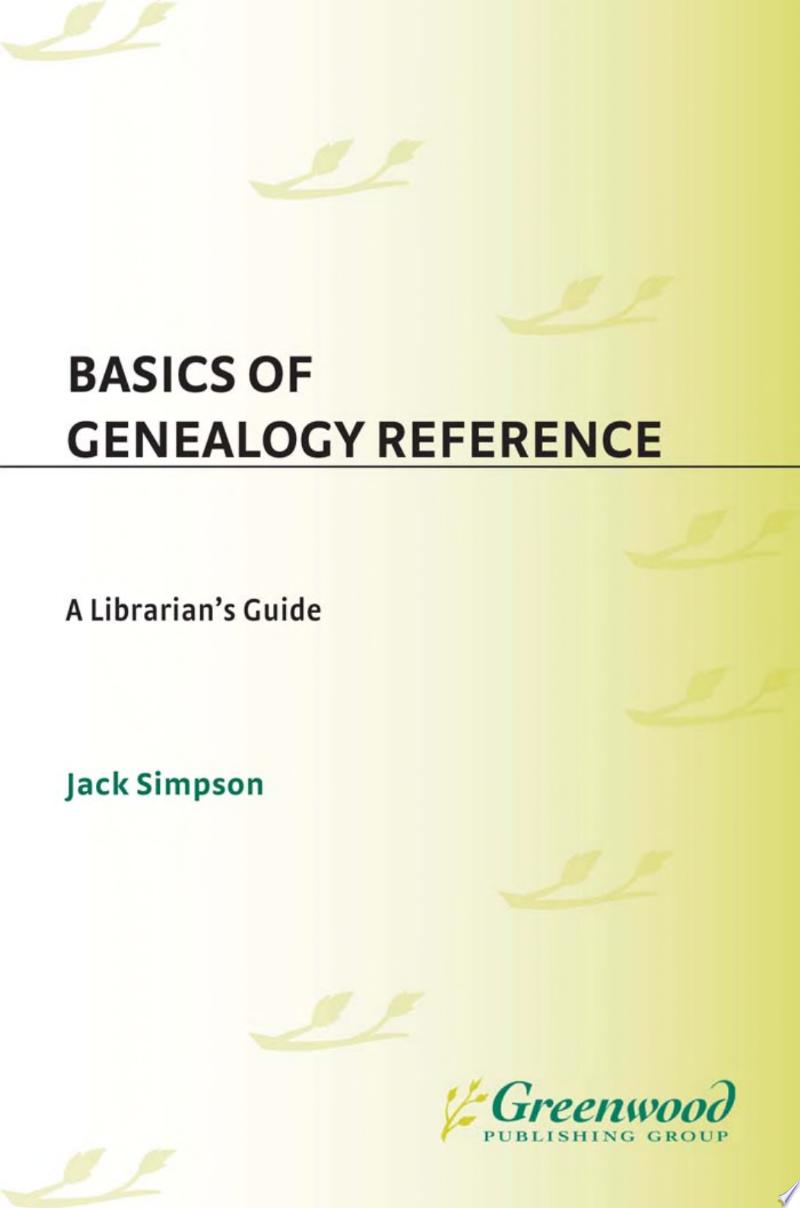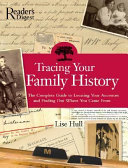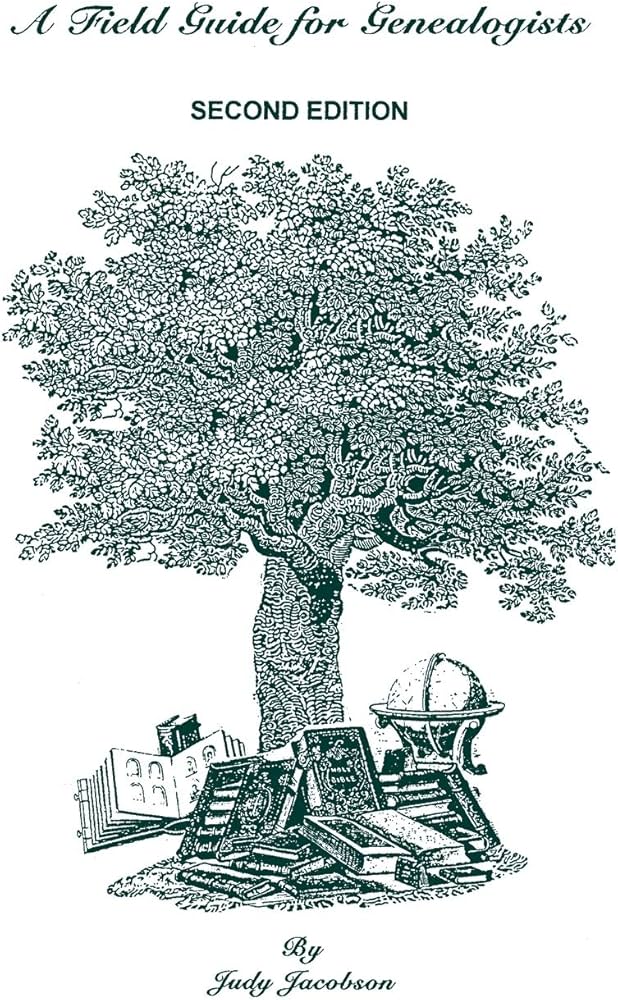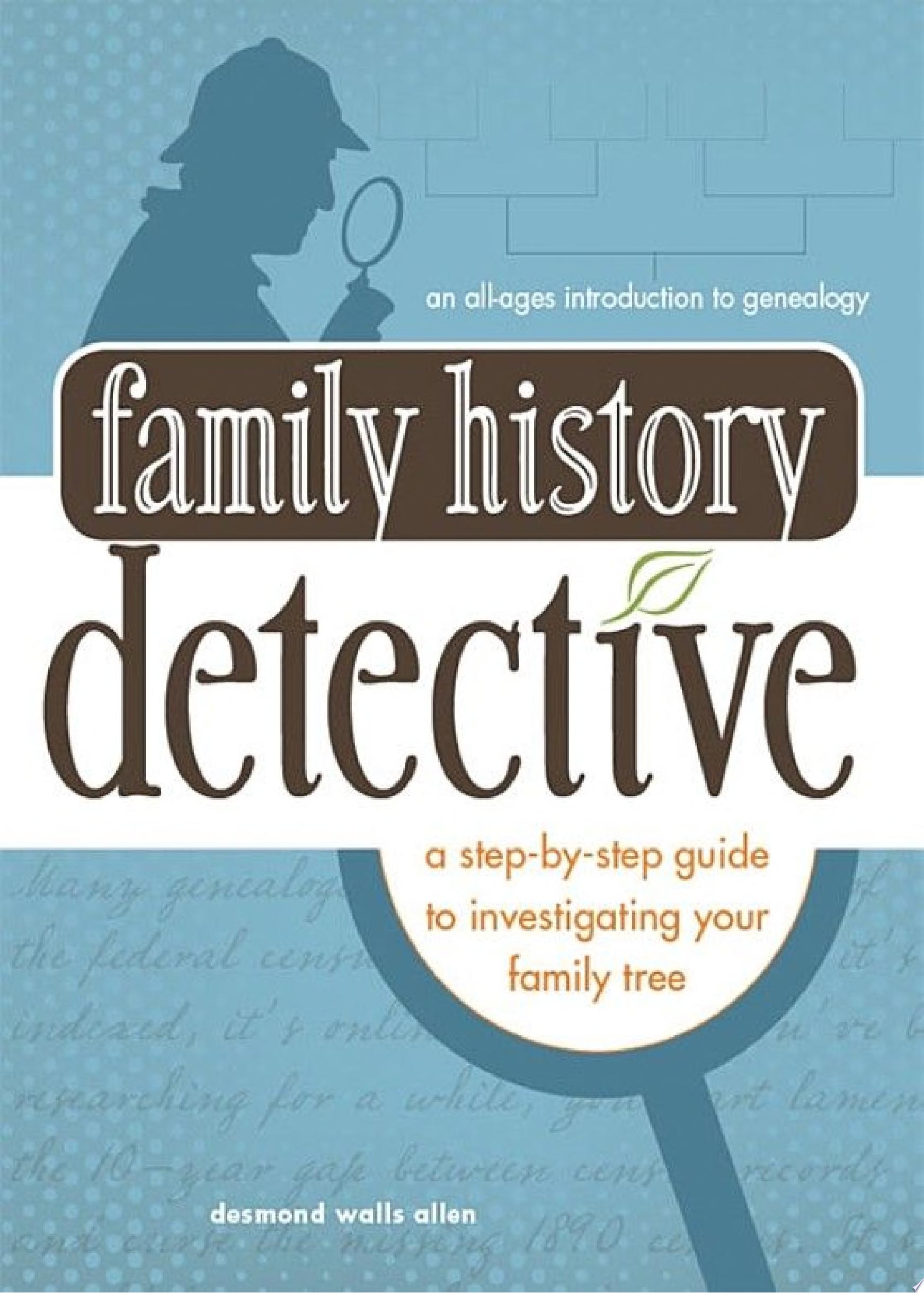Getting Started
Gather as many names and death dates as you can from family members, tombstones, personal papers, photos, scrapbooks, etc. Is there a family bible?
Try to find obituaries and/or death certificates.
Did your family live in another area at one time? If so, you may need to extend your research to that area. U.S. census records are available every ten years from 1790-1880 and 1900-1950. Track ancestors through the census to find their parents.
Extend your search by checking deeds, wills, and military records.
Use variations in spelling. Also, records may only have initials or abbreviations (such as W.T. or Wm.)
Not all records are digitized for online use. You may need to travel to find more information.
Books
Family History Detective: A Step-by-Step Guide to Investigating Your Family History SC 929.1 Allen, Desmond
Tracing Your Family Tree: Discover Your Roots
and Explore Your Family’s History
SC 929.1 Chater, Kathy
Unpuzzling Your Past and
The Genealogist’s Companion & Sourcebook
SC 929.1 Croom, Emily
A Field Guide for Genealogists
SC 929.1 Jacobson, Judy
Forensic Genealogy
SC 929.1072 Fitzpatrick, Colleen
Tracing Your Family History
SC 929.1072 Hull, Lise
Basics of Genealogy Reference
SC 929.1072 Simpson, Jack
Family Photo Detective
SC 929.1072 Taylor, Maureen
DNA and Social Networking
SC R 929.1 Kennett, Debbie
Reading Early American Handwriting
SC 929.1 Sperry, Kip
The Genealogist’s Address Book
SC R 929.1025 Bentley, Elizabeth
Compendium of Historical Sources
SC R 929.1072 Bremer, Ronald
Evidence Explained: Citing History Sources from Artifacts to Cyberspace
SC R 929.1072 Mills, Elizabeth
International Vital Records Handbook
SC RR 929.1 Kemp, Thomas Jay
Creating Family Newsletters & Time Capsules
SC 929.1 Hart, Anne
Caring for Your Family Treasures
SC R 745.1 Long, Jane
Photographs: Archival Care & Management
SC R 771.46 Ritzenthaler, Mary
How to Archive Family Keepsakes
SC R 929.1072 Levenick, Denise May








